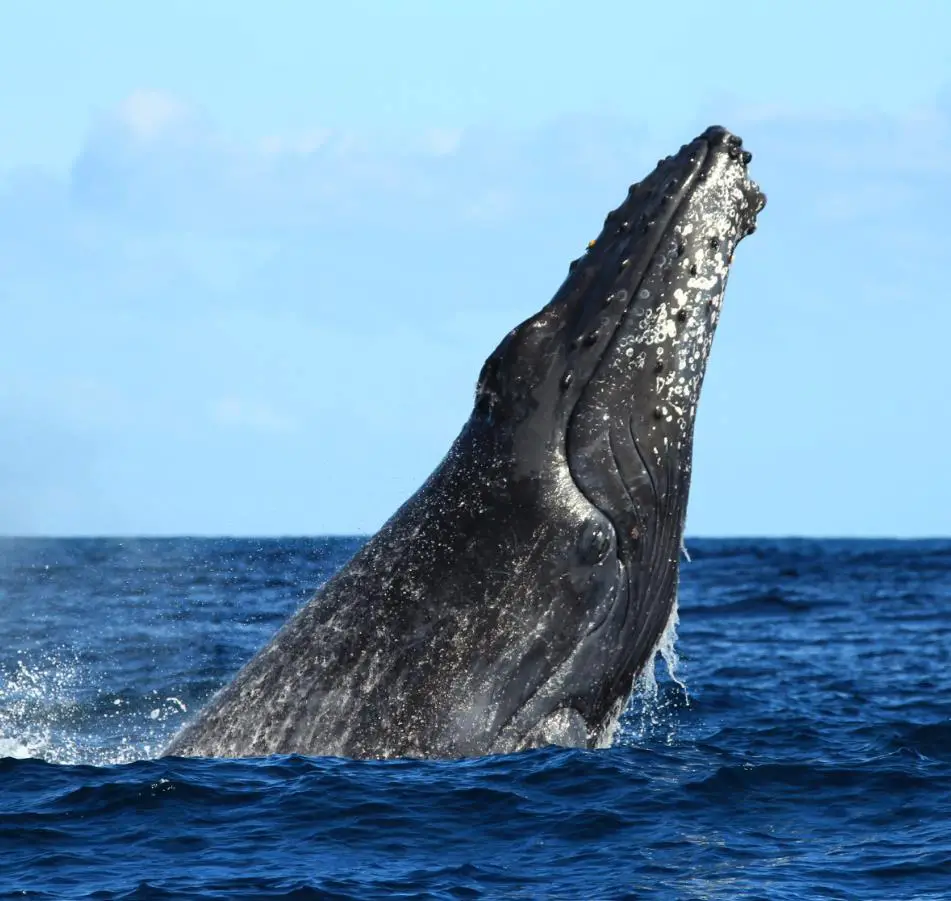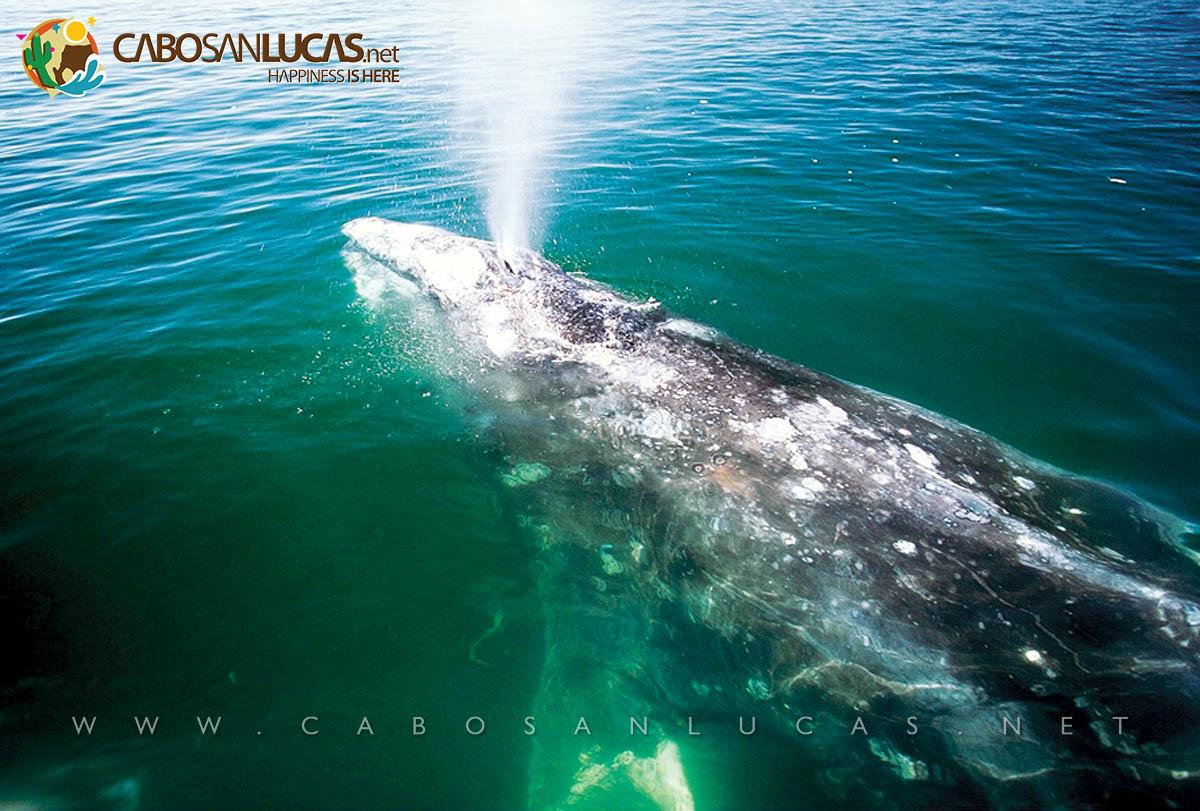Every year from January to March, visitors in Los Cabos enjoy an added thrill as gray whales end their thousands of miles journey from the frigid Arctic Ocean to the warm waters of the Baja California to calve their young. Whale watching excursions range from large vessels to Zodiac rafts, or you can enjoy a fly-in trip to Magdalena Bay, a few hundred miles north of Cabo San Lucas, for an up-close and personal experience with the whales and their newborn, for the thrill of a lifetime.
Whales!
“There she blows!-there she blows! A hump like a snow hill! It is Moby Dick!” exclaimed the lookout men that sighted the white whale aboard the whaler “Pequod”, where Captain Ahab pursued her with no end, to kill her as revenge toward the animal whose fury he had known in an unfortunate previous meeting…
Who does not remember this fragment of the literary work by novelist Herman Melville, “Moby Dick”, published in 1851, the telling of which makes the imagination fly and stirs us to our bones, especially in the meetings between Captain Ahab and the most famous albino whale of all time, Moby Dick.
The meeting that concerns us today is also with a whale. But different from the aforementioned, this whale is a friend, a kind traveler who visits us year after year in these seas. Her docile behavior contrasts with the magnitude of her size. It is the grey whale, one of the 8 species that can be found in Mexico, with a total of 11 species that inhabit our planet.
Among the Bryde (Balaenoptera brydei), the Sei (Balaenoptera borealis) and the Minke (Balaenoptera acutorostrata) fin whales, the Minke is the smallest and most abundant. The fin whale (Balaenoptera physalus) that is seen these days throughout the year in the Sea of Cortez, suggesting that the population resides solely in Mexico; the Humpback (Megaptera novaeangliae), the Southern Right (Eubalaena australis); the Grey Whale (Eschrichtius robustus) and finally, the Blue Whale (Balaenoptera musculus), the largest animal on the planet, which reaches a length of a little less than 100 ft. and 120 tons in weight, are the species that can be found along the coasts of Mexico.

The Grey Whale is born and reproduces on the Pacific Coast of Southern Baja. They arrive from the seas of Bering, Chukchi and Beaufort (near Alaska) where they live on their own. During the fall, when the surface of the sea begins to freeze, the Grey Whale initiates its migration towards the south, from the Aleutian Islands, through the North American Pacific and the Gulf of Alaska. Its destination is its own birthplace; the coastal lagoons of Southern Baja. This journey is made alone or in groups up to 16 whales.
The Grey Whale has no teeth. Rather it uses “baleen” which is a system of plates that filter microorganisms, seaweed and animals providing its nourishment (plankton).
From December to February is the season for birthing; the females (from 50 ft. long and approximately 30 tons in weight) give birth to a baby whale that can weigh up to half a ton and measure 15 ft. long. Its skin is dark as opposed to the adults who have parasites stuck to their skin, giving them a grey tone, and are therefore known as “grey whales”.

The grey whale initiates its return in the months between April and March. A journey of almost 13,000 miles awaits the females that do not return alone and are the last to give birth. Now they have the company of the baby whales which they fiercely defend against any danger. For this reason, the baby whale is often called “the devil fish”. The delay in the females’ return is due to its need to eat as much as possible before its journey north since they must be nourished enough to feed their young and they rarely eat along the way. Other females are pregnant when they begin the trip north and will return to the same waters to give birth to their young. The gestation time is between 9 and 12 months.
On occasions, some whales head further south and stay in the California Gulf waters that begin in Los Cabos, to summer with the rest of the American, Canadian and European tourists traveling through the warm golf currents to Cerralvo Island, Espiritu Santo, San Jose, and even to the bay of Loreto.
The grey whale was relentlessly pursued and around 1860 it was thought that it had become extinct, but around 1911 they began to recuperate. Mexico was the first country to take action for its protection.
Ideal places to come into contact with the whales:
- From Los Cabos, it is relatively easy to get to one of the birthing areas of the grey whale; the lagoon complex of Magdalena Bay, on the Pacific Coast, is approximately 125 miles to the north of Cabo San Lucas.
- In the port of San Carlos and Adolfo López Mateos visits to see the whales are organized and one can even get close enough to pet them.
Docile and curious, the Grey Whale has preferred the warmth and transparency of these waters, adopted by locals and tourists to become another of the attractions that Land’s End offers its visitors.
Author: Lands End Magazine



Leave A Comment